Disclosure: This article contains affiliate links. We may earn a commission from purchases at no extra cost to you, which helps our travel content.
Chicago has always reminded me of a sporting underdog with championship qualities—overlooked by some in favor of coastal American cities, yet possessing a cultural depth and architectural grandeur that rivals any global metropolis. Having visited the Windy City multiple times while covering sports tournaments in the Midwest, I've developed a profound appreciation for this lakefront gem that balances urban sophistication with midwestern warmth. During my most recent summer visit with close friends, I crafted what I believe is the perfect 72-hour introduction to Chicago. This itinerary strikes the ideal balance between iconic landmarks and hidden cultural treasures, designed specifically for couples seeking connection with each other and with one of America's most characterful cities. Whether you're drawn by the magnificent skyline, world-class museums, vibrant neighborhoods, or the legendary food scene, Chicago rewards visitors with experiences that resonate long after departure—much like the lingering echo of a perfect stadium chant.
Day 1: The Magnificent Mile and Cultural Icons
Begin your Chicago adventure where the city puts its best foot forward—along the famous Magnificent Mile. This stretch of Michigan Avenue serves as Chicago's commercial spine, but it's the stunning buildings flanking the thoroughfare that truly command attention. As someone who's explored urban landscapes from Wellington to Mumbai, I can attest that Chicago's architectural heritage stands among the world's finest.
Start your morning with the Chicago Architecture Center's river cruise—an experience I've enjoyed three times and never tire of. Unlike typical tourist boats that simply point out buildings, these 90-minute tours are led by passionate docents who contextualize how Chicago's skyline reflects American ambition, innovation, and resilience. The perspective from the water reveals the city's architectural evolution in a way that's impossible to appreciate from street level.
After your cruise, stroll to Millennium Park to admire Cloud Gate (affectionately known as 'The Bean'). While undeniably touristy, this reflective sculpture creates a communal experience reminiscent of traditional gathering places I've encountered in indigenous communities—a modern interpretation of the village square. Take your obligatory photos, then escape the crowds by exploring the adjacent Lurie Garden, a prairie-inspired sanctuary where native plantings demonstrate ecological design principles.
For lunch, bypass the chain restaurants and head to The Gage on Michigan Avenue for elevated gastropub fare with local ingredients. Their venison burger paired with a local craft beer provides the perfect fuel for your afternoon cultural immersion at the Art Institute of Chicago. With over 300,000 works, strategic planning is essential. Download the museum's app beforehand to customize your visit around personal interests—my wife and I spent three hours focusing solely on American modernism and the stunning Thorne Miniature Rooms.
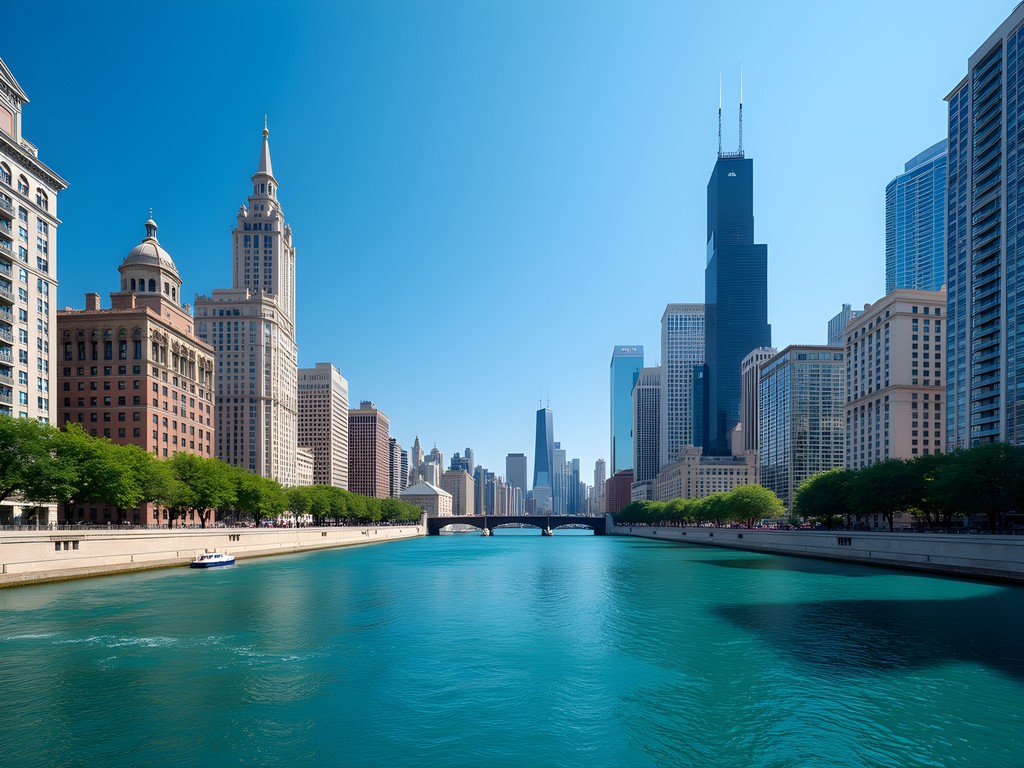
💡 Pro Tips
- Purchase Chicago Architecture Foundation river cruise tickets online at least a day in advance—the premium seats in the front of the boat are worth the extra cost
- Visit 'The Bean' early morning or evening to avoid peak crowds and capture better photos
- The Art Institute of Chicago offers free admission Thursday evenings for Illinois residents, creating larger crowds—plan accordingly
Day 2: Neighborhood Exploration and Culinary Delights
Chicago, like any great sporting contest, reveals its true character beyond the highlight reel. On your second day, venture into the neighborhoods where authentic Chicago life unfolds. Begin in Wicker Park, where my journalist instincts always lead me to Myopic Books—a three-story independent bookstore with over 70,000 used volumes. The carefully curated selection reflects the intellectual curiosity of Chicago residents far better than any downtown souvenir shop.
From there, walk to the 606 Trail, Chicago's elevated park built on a former railway line. While less famous than New York's High Line, this 2.7-mile urban pathway offers a fascinating cross-section of Chicago neighborhoods. I've found that infrastructure repurposing projects like this reveal a city's commitment to community spaces and ecological thinking. Bring your reusable water bottle as summer temperatures can climb quickly on the exposed trail.
For lunch, descend into Logan Square where Lula Cafe pioneered farm-to-table dining in Chicago long before it became trendy. Their seasonal menu showcases Midwestern ingredients with global techniques—a culinary philosophy that mirrors Chicago's blend of heartland values and cosmopolitan outlook.
Spend your afternoon in Pilsen, where Mexican cultural heritage merges with artistic expression. The National Museum of Mexican Art offers free admission and world-class exhibitions that contextualize the immigrant experience. Afterward, wander the neighborhood to discover vibrant murals that speak to themes of identity, belonging, and cultural preservation—subjects that resonate deeply with my own mixed heritage experience.
As evening approaches, make your way to Chinatown for dinner at Lao Sze Chuan, where Chef Tony Hu's three-chili chicken delivers legitimate Sichuan heat. Chicago's Chinatown differs from coastal versions—it feels less touristic and more authentically integrated into the city's fabric. After dinner, capture stunning nighttime skyline photos from Ping Tom Memorial Park. I recommend using a compact tripod for stability during longer exposures—the city lights reflecting on the river create magical compositions.
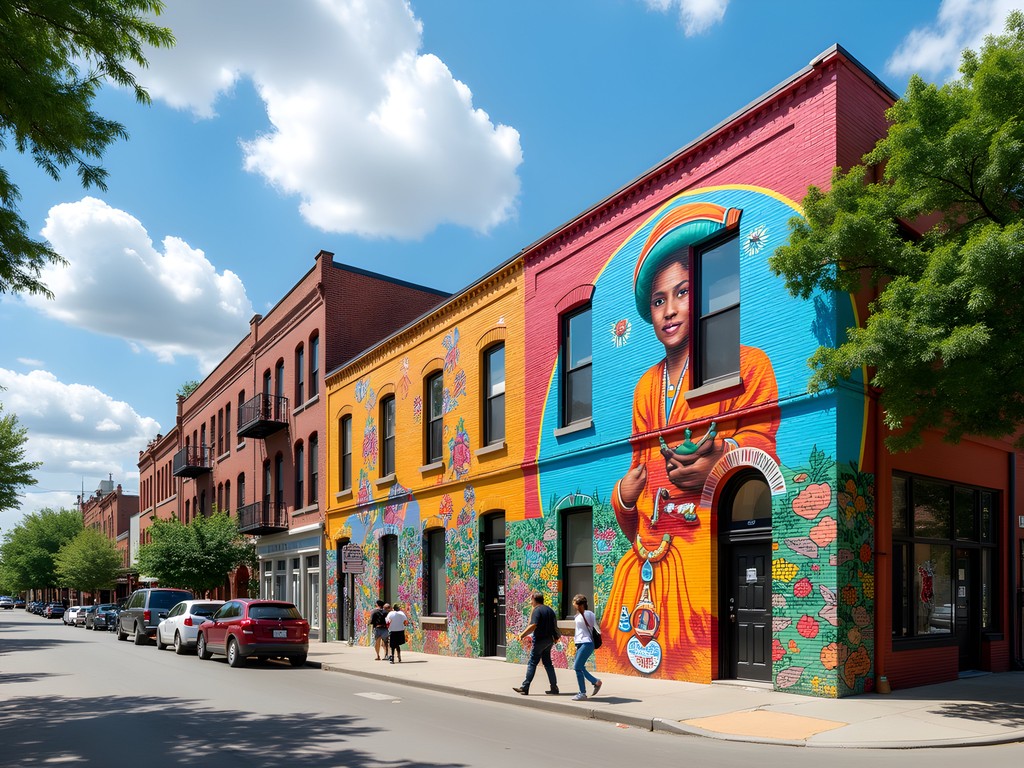
💡 Pro Tips
- The 606 Trail gets crowded on weekends—visit on weekday mornings for a more contemplative experience
- Many Pilsen murals are on residential streets; be respectful when photographing near people's homes
- For the best skyline photos from Ping Tom Park, position yourself at the river edge near the pagoda
Day 3: Lakefront Leisure and Architectural Marvels
Chicago's relationship with Lake Michigan reminds me of coastal cities I've visited worldwide—the water isn't merely a geographic feature but a fundamental aspect of the city's character and rhythm. Begin your final day embracing this connection with an early morning bike ride along the Lakefront Trail. Rather than bringing your own equipment, I recommend using Divvy, Chicago's bike-share system, which offers day passes and conveniently located stations throughout the lakefront.
Start at North Avenue Beach and pedal south, enjoying unobstructed views of the skyline that shifts perspective with each mile. The 18-mile trail offers a cyclists' tour of Chicago's waterfront diversity: bustling beaches, quiet nature sanctuaries, harbor marinas, and museum campuses. For wildlife enthusiasts, the area around Montrose Point Bird Sanctuary (known locally as 'the Magic Hedge') provides surprising biodiversity within the urban environment—I've spotted migratory warblers here that reminded me of bird watching with my wife in New Zealand's conservation areas.
After returning your bikes, head to the Chicago Cultural Center, housed in what was once the city's main library. The building's two magnificent stained glass domes—particularly the Tiffany dome—exemplify the civic pride that characterized American cities during the late 19th century. When I first visited, a docent explained that the building's lavish materials were deliberately chosen to demonstrate that beauty and culture belonged to all citizens, not just the wealthy—a democratic ideal expressed through architecture.
For a final architectural pilgrimage, take the Green Line train to Oak Park to visit Frank Lloyd Wright's Home and Studio. While Chicago proper contains several Wright buildings, this intimate tour reveals the laboratory where the Prairie School aesthetic was born. The revolutionary open floor plans and integration with nature that Wright pioneered here eventually influenced residential architecture worldwide. Having visited Wright buildings across America, I find this modest studio most powerfully conveys his design philosophy.
Return downtown for a farewell dinner at Cindy's, the rooftop restaurant atop the Chicago Athletic Association Hotel. Reserve well in advance to secure a table with panoramic views over Millennium Park and Lake Michigan. The shared plates menu encourages conversation and reflection—the perfect setting to discuss favorite moments from your Chicago weekend while watching the sunset paint the sky above the city's magnificent skyline. For these memorable sunset views, I always bring my polarized sunglasses to enhance the colors without digital filters.
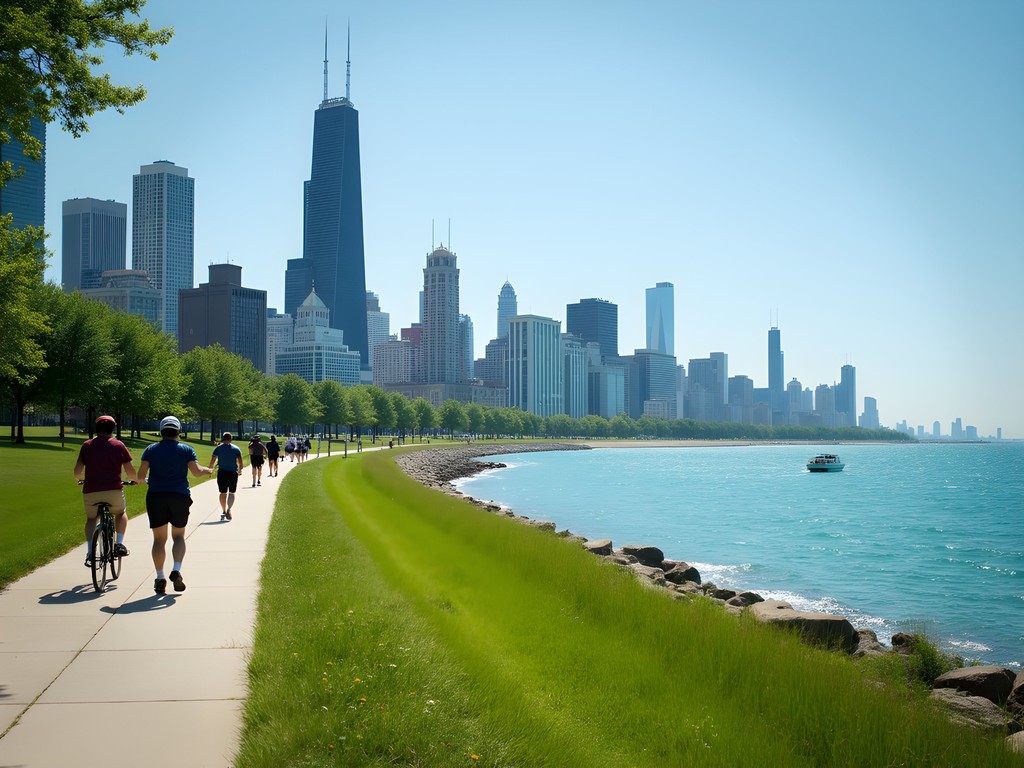
💡 Pro Tips
- Divvy bikes have a 30-minute usage limit before additional charges apply; plan your route with docking stations in mind
- The Chicago Cultural Center offers free guided tours at specific times—check their website for the schedule
- For Frank Lloyd Wright's Home and Studio, book the first morning tour to avoid crowds and catch beautiful light through the art glass windows
Where to Stay: Strategic Home Bases
Choosing accommodation in Chicago requires balancing location, amenities, and budget—much like selecting the perfect viewing position in a stadium. After multiple visits to the city, I've found that certain neighborhoods offer particular advantages for first-time visitors.
The Loop provides the classic Chicago experience with walkable access to major attractions and excellent public transportation connections. The historic Palmer House Hilton delivers old-world Chicago grandeur with its impressively restored lobby and central location. While room sizes reflect its vintage origins, the property's history and atmosphere compensate for more modest dimensions. For a more contemporary option, Kimpton Gray Hotel occupies a beautifully renovated office building with thoughtful details and excellent service.
For couples seeking a more residential experience, I recommend River North, where boutique hotels like The Robey occupy a landmark Art Deco building in Wicker Park. The rooftop pool offers spectacular skyline views while positioning you amid local restaurants and shops rather than tourist attractions. This neighborhood-based approach allows you to experience Chicago more as residents do.
Budget-conscious travelers should consider Acme Hotel in River North, which delivers stylish rooms and tech-forward amenities at reasonable price points without sacrificing location. Their morning coffee delivery service—where fresh thermoses appear hanging on your door—is a thoughtful touch that starts each day right.
Whichever accommodation you choose, prioritize properties within a 5-minute walk of an 'L' train station. Chicago's elevated train system provides the transportation backbone that connects the city's diverse neighborhoods. For navigating between hotel and attractions, I rely on my crossbody travel bag which keeps essentials secure while maintaining a low profile in urban settings.
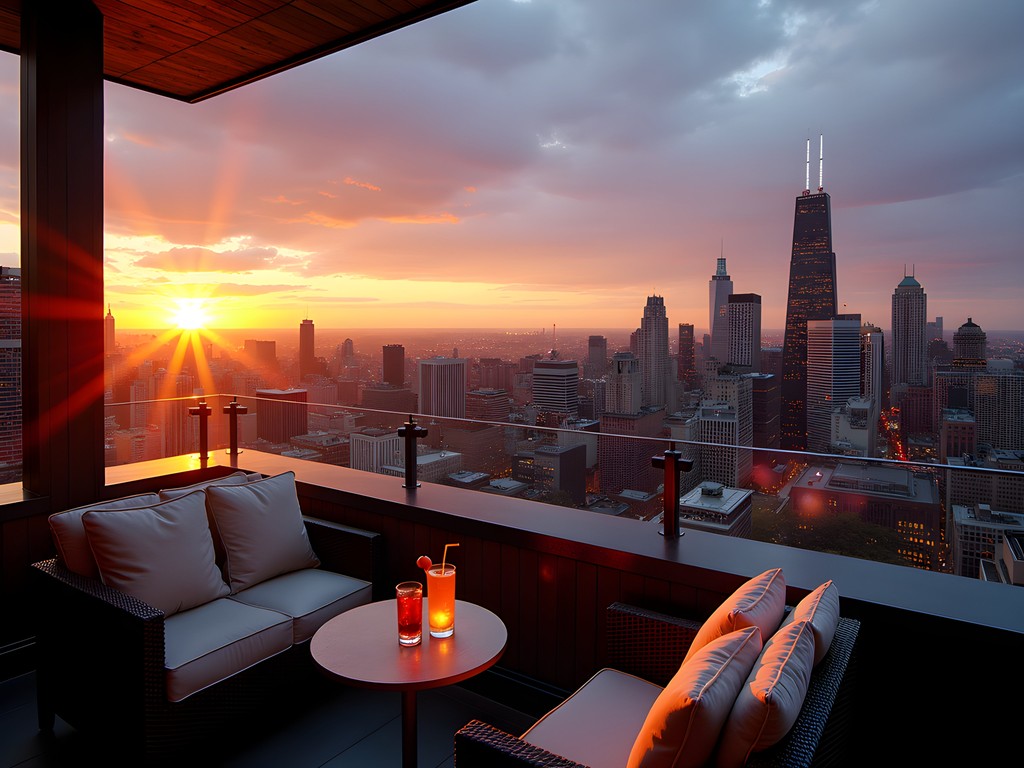
💡 Pro Tips
- Hotels near Millennium Park command premium prices; properties just a few blocks west offer better value
- Many Chicago hotels charge separate destination or amenity fees—factor these into your budget comparisons
- If visiting during major conventions or summer festivals, book accommodations at least 3 months in advance for best availability
Getting Around: Navigating the Windy City
Chicago's public transportation system rivals many global cities I've visited, offering comprehensive coverage that eliminates the need for rental cars during a weekend visit. The Chicago Transit Authority (CTA) operates both the 'L' trains—named for their elevated tracks—and an extensive bus network that efficiently connects neighborhoods and attractions.
Upon arrival at either O'Hare or Midway airports, purchase a Ventra Card from the vending machines before leaving the terminal. This reloadable fare card works on all CTA services and offers better value than paying individual fares. The Blue Line connects directly from O'Hare to downtown in about 45 minutes, while the Orange Line links Midway to the Loop in roughly 25 minutes—both significantly faster than road transport during peak traffic periods.
The color-coded 'L' system forms a hub-and-spoke pattern centered on the Loop, with the elevated tracks creating a distinctive urban soundtrack that has become emblematic of Chicago. While the trains efficiently connect major districts, don't overlook buses for east-west travel across the city. Google Maps provides reliable public transit directions that combine train and bus options for optimal routing.
For exploring neighborhoods like Lincoln Park or Wicker Park, consider walking or using Divvy bikes when weather permits. Chicago's grid system makes navigation straightforward once you understand that Madison Street divides north from south, while State Street separates east from west.
When traveling between dinner reservations or evening events, rideshare services like Uber and Lyft provide convenient alternatives. However, during peak periods or inclement weather, be prepared for surge pricing and longer wait times. For couples traveling together, these services often prove more economical than two transit fares for shorter distances.
Regardless of your transportation choices, comfortable walking shoes are essential—Chicago rewards pedestrian exploration in ways that reveal the city's character beyond guidebook highlights. My merino wool socks have proven invaluable during long urban exploration days, providing blister-free comfort even when covering 20,000+ steps while preventing odor buildup that cotton alternatives can't match.

💡 Pro Tips
- Purchase a 3-day unlimited Ventra pass ($20) if planning to use public transit extensively—it quickly pays for itself
- The water taxi service along the Chicago River offers scenic transportation between major attractions during summer months
- Download the Ventra app to manage your transit card, check balances, and receive service alerts in real-time
Final Thoughts
Chicago deserves far more than 72 hours, but this itinerary provides first-time visitors with both the highlight experiences and deeper cultural context that makes the Windy City special. Like any great sporting match, Chicago reveals itself through moments of spectacle and quieter periods of nuance—from the grandeur of its skyline to the distinctive personalities of its neighborhoods. What continues to draw me back isn't just the architectural majesty or cultural institutions, but the city's authentic character: unpretentious yet sophisticated, historic yet innovative, distinctly American yet globally influenced. As you depart, you'll likely feel what I experienced on my first visit—not the satisfaction of having 'completed' Chicago, but rather an appreciation for its depth and a mental list of what you'll explore on your inevitable return. The city stands ready to welcome you back, like an old friend with more stories to share.
✨ Key Takeaways
- Balance iconic attractions with neighborhood exploration for an authentic Chicago experience
- Chicago's architecture and public spaces reveal the city's values and history more eloquently than any guidebook
- Summer visits maximize lakefront enjoyment and outdoor dining opportunities
- Public transportation efficiently connects major attractions while providing cultural immersion
📋 Practical Information
Best Time to Visit
Late May through early October, with June and September offering ideal temperatures with smaller crowds
Budget Estimate
$200-300 per day per couple (excluding accommodations)
Recommended Duration
3-4 days minimum, ideally 5-7 days for deeper exploration
Difficulty Level
Easy
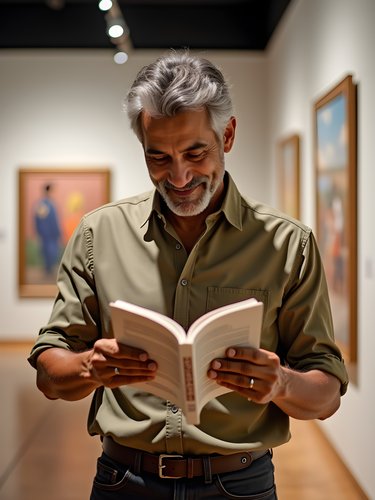
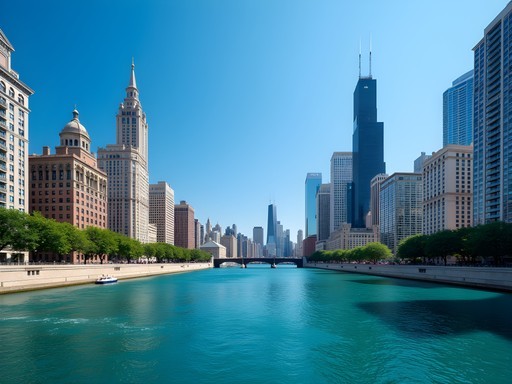






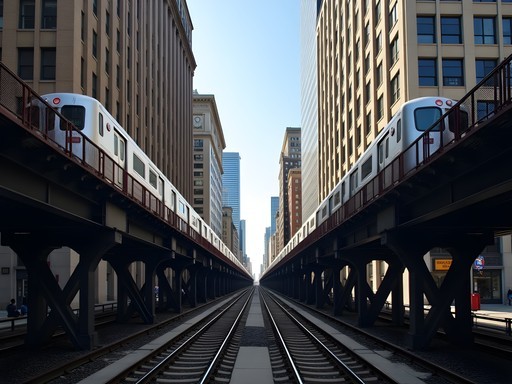
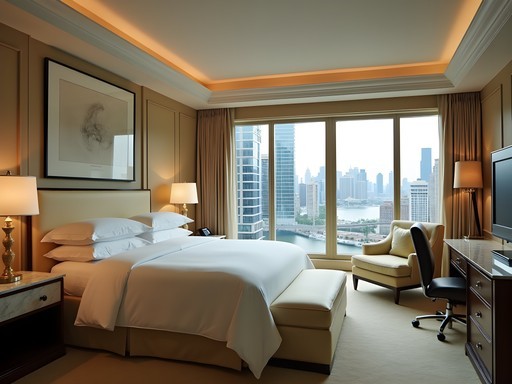
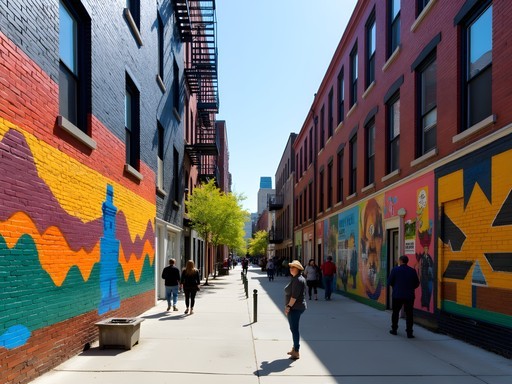

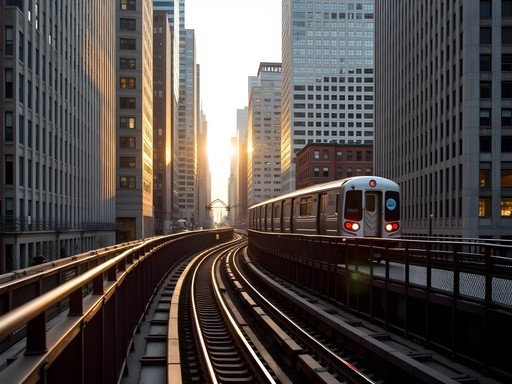

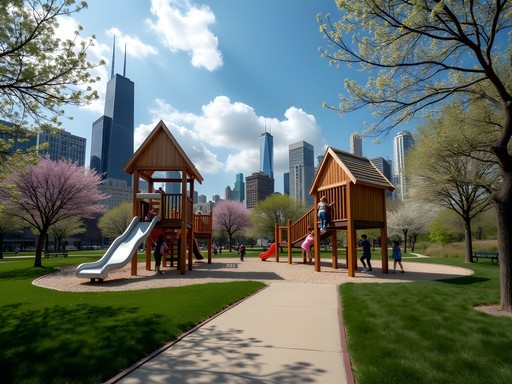
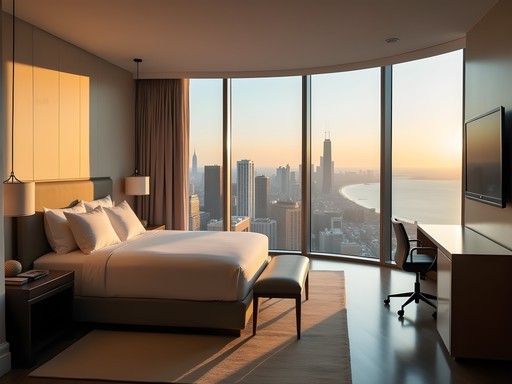
Comments
JetsetJamie
Any recommendations on where to stay? The article mentions strategic home bases but I'm torn between downtown and neighborhoods.
WindyCityExplorer
For first-timers, definitely stay downtown/River North. Everything's walkable and you're right by the L for neighborhood trips. Lincoln Park is nice but you'll spend more time commuting.
MidwestMom
Just got back from using this itinerary with our teenagers and it was spot on! The only thing I'd add is to schedule more time at the Art Institute than suggested. We rushed through and missed so much. Also, Lou Malnati's was good but we actually preferred the deep dish at Pequod's - that caramelized crust is game-changing! Divvy bikes along the lakefront was everyone's favorite part.
freeninja
Pequod's over Lou Malnati's? That's a hot take! Definitely trying both when I go.
MidwestMom
Haha, I know it's controversial! Both are amazing but Pequod's just had that extra something special. Let me know which one you prefer!
TravelBug22
Love this! The photos of the Bean are making me want to book a trip right now!
Megan Martin
Having been to Chicago dozens of times for business, I can confirm this is a solid itinerary for first-timers. One professional tip: if you're staying downtown, consider booking a hotel with a high floor facing east. The sunrise over Lake Michigan is spectacular and worth waking up for. For business travelers extending their stay, I'd add a visit to the Chicago History Museum to understand the city's fascinating development. And don't skip Millennium Park early morning before the crowds - it's a different experience entirely!
Claire Hawkins
We just got back from Chicago with our kids (8 and 11) and followed most of your itinerary! Day 2 was our favorite - the kids absolutely loved the architecture boat tour, and we spent hours at the Field Museum. We added Maggie Daley Park which was perfect for them to burn off energy. One tip for families: the Chicago CityPASS saved us about 50% on attractions and let us skip most lines. The only thing I'd add is Garfield Park Conservatory if you need a break from the city pace - it's free and absolutely gorgeous!
Marco Flores
Great itinerary, Amit! I'd add that winter visitors should consider the weather when planning. I did Chicago last February and while the architecture was still stunning, the lakefront was BRUTAL with wind chill. We ended up spending more time in amazing museums and found this incredible jazz club in Logan Square called The Whistler that wasn't on any tourist lists. Also, the neighborhood food tour in Pilsen completely changed how I think about Mexican cuisine. One tip: I used my pocket guide constantly because my phone kept dying in the cold!
ChiTownLocal85
The Whistler is such a hidden gem! If you liked that spot, next time try Dorian's in Wicker Park - same vibe but with amazing cocktails.
Marco Flores
Thanks for the tip! Adding Dorian's to my list for next visit. Chicago's neighborhood spots are what make it special.
freeninja
This is perfect timing! Going to Chicago next month for the first time. Is public transportation good enough to follow this itinerary or should I rent a car?
Marco Flores
Definitely stick with public transit! Chicago's L train system is excellent and much easier than dealing with downtown parking. I did this whole itinerary car-free last summer.
freeninja
Thanks Marco! That's super helpful. Did you get a multi-day pass or just pay per ride?
Marco Flores
I got a 3-day CTA pass and it was perfect. Saved money and made hopping on/off trains super easy. The Ventra app lets you buy it right on your phone!
photobackpacker
That skyline shot from the lakefront is incredible! What time of day did you take it? Hoping to capture something similar when I visit.
Amit Sullivan
Thanks! I took it about an hour before sunset from the Adler Planetarium area - it's called the 'Planetarium Peninsula' and gives you that perfect skyline view. Golden hour makes all the difference!
vacationbuddy
Great post! I'm planning to visit in winter - would you change anything in this itinerary for January? Worried about the cold for those lakefront activities on Day 3.
Megan Martin
Chicago winters are no joke! I'd suggest moving most activities indoors - the Art Institute and Field Museum are perfect winter refuges. For architecture, take the Chicago Architecture Center's indoor river cruise instead of walking tours. And don't forget to pack your thermal layers - they're lifesavers in the Chicago wind!
vacationbuddy
Thanks for the winter tips! Definitely going to focus more on indoor activities and will check out those thermal layers.
luckychamp
That deep dish pizza recommendation on Day 2 is spot on! Lou Malnati's changed my life last summer lol
Venture X
Premium card with 2X miles, $300 travel credit, Priority Pass